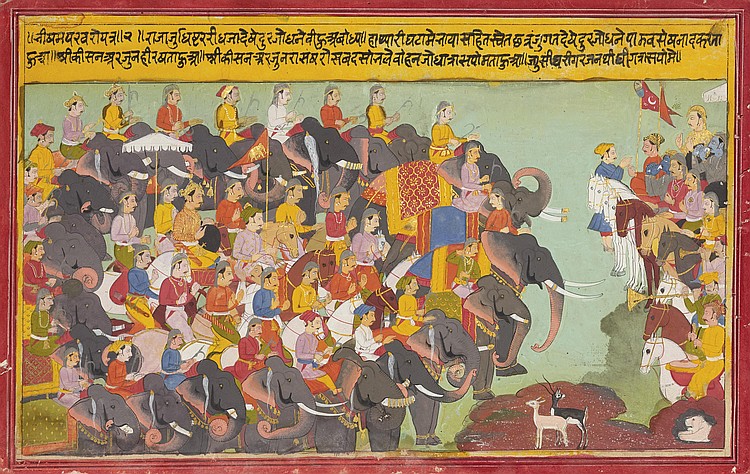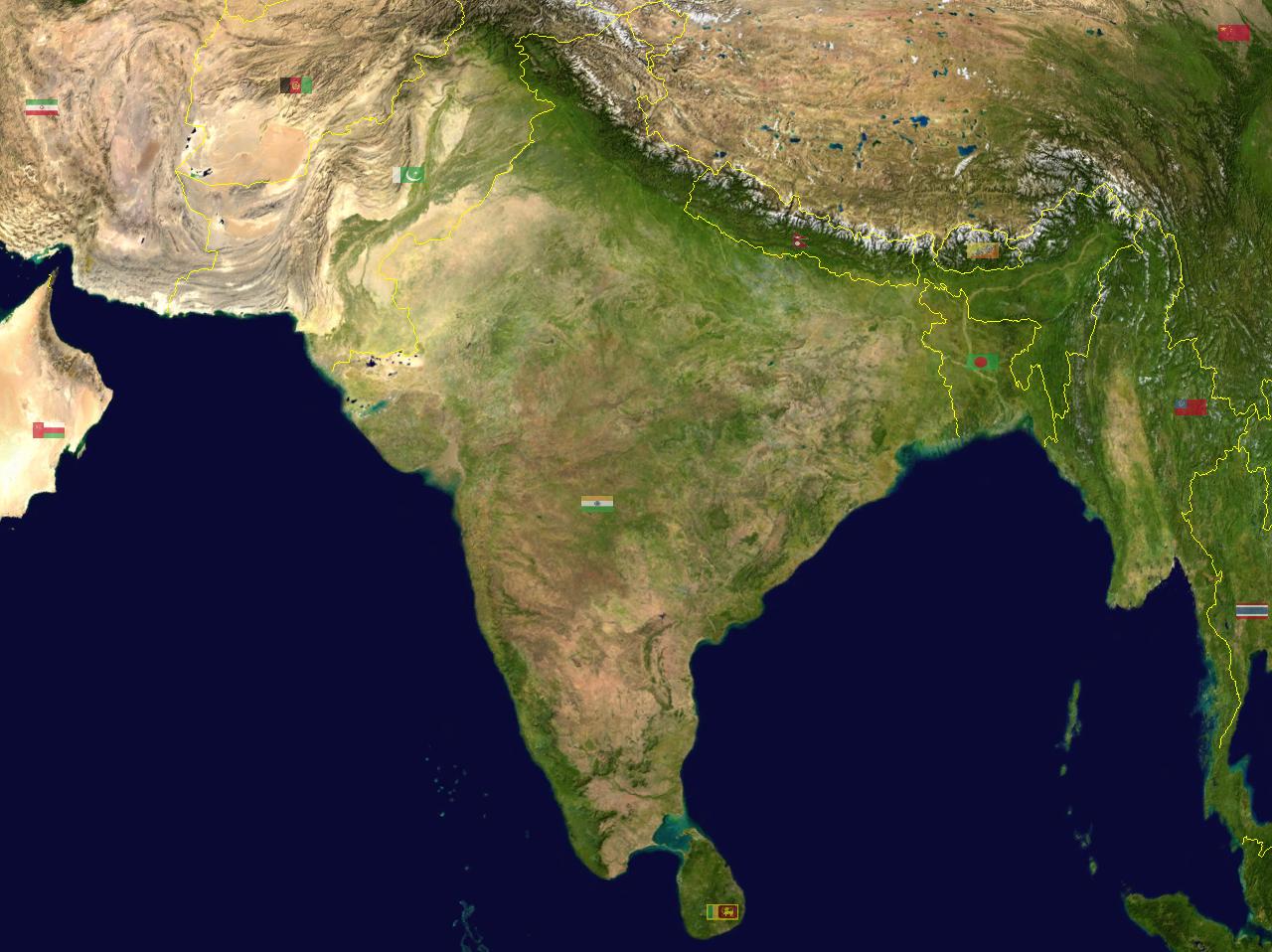|
Madra Kingdom
Madra Kingdom (; ) was a kingdom grouped among the western kingdoms in the epic Mahabharata. Its capital was Sagala in Madra region, modern Sialkot in the Punjab province of Pakistan. The Kuru king Pandu's (''Pāṇḍu'') second wife was from Madra kingdom and was called Madri (; ; IPA/Sanskrit: ). The Pandava twins, Nakula and Sahadeva, were her sons. Madri's brother Shalya was the king of Madra. Though affectionate to the Pandavas, he was tricked to give support to Duryodhana and fought against the Pandavas during the Kurukshetra War. He was killed by Yudhishthira, the eldest Pandava. Other than the Madra kingdom (Eastern Madra or Purva Madra) with Sagala as its capital, it is believed that there was a Western Madra (Apara Madra) and a Northern Madra (Uttara Madra). Origin According to the Vayu Purana, the Madra Kingdom was founded by King Ushinara Shibi of the Anu race. Anu was the son of Yayati. According to Bhagavata Purana, The kingdom of Madra was founded by Madr ... [...More Info...] [...Related Items...] OR: [Wikipedia] [Google] [Baidu] |
Yudhishthira
''Yudhishthira'' (Sanskrit: युधिष्ठिर, IAST: ''Yudhiṣṭhira'') is the eldest among the five Pandava brothers. He is mentioned in the ancient epic Mahabharata. He was sired by King Pandu of the Kuru Dynasty and his first wife, Kunti. Yudhishthira is later crowned the king of Indraprastha with his capital at Hastinapura. From his childhood, Yudhishthira was greatly influenced by his uncle Vidura and his great uncle Bhishma, and believed in the virtues of ''dharma''. He was trained by two warrior-sages, Kripacharya and Dronacharya. Yudhisthira was appointed as the crown prince of Hastinapura, but was later replaced by Duryodhana. Because of Kunti's misunderstanding, Yudhishthira and his siblings had a polyamorous marriage with Draupadi, the princess of Panchala. Dhritarashtra, on Bhishma's request, divided his kingdom to end the succession dispute between Yudhishthira and Duryodhana. The eldest son of Pandu was given a barren land to rule, which he ... [...More Info...] [...Related Items...] OR: [Wikipedia] [Google] [Baidu] |
Cavalrymen
Historically, cavalry (from the French word ''cavalerie'', itself derived from "cheval" meaning "horse") are soldiers or warriors who fight mounted on horseback. Cavalry were the most mobile of the combat arms, operating as light cavalry in the roles of reconnaissance, screening, and skirmishing in many armies, or as heavy cavalry for decisive shock attacks in other armies. An individual soldier in the cavalry is known by a number of designations depending on era and tactics, such as cavalryman, horseman, trooper, cataphract, knight, hussar, uhlan, mamluk, cuirassier, lancer, dragoon, or horse archer. The designation of ''cavalry'' was not usually given to any military forces that used other animals for mounts, such as camels or elephants. Infantry who moved on horseback, but dismounted to fight on foot, were known in the early 17th to the early 18th century as ''dragoons'', a class of mounted infantry which in most armies later evolved into standard cavalry while retaining ... [...More Info...] [...Related Items...] OR: [Wikipedia] [Google] [Baidu] |
Sheep Milk
Sheep's milk (or ewes' milk) is the milk of domestic sheep. It is commonly used to make cultured dairy products such as cheese. Some of the most popular sheep cheeses include feta (Greece), ricotta (Italy), and Roquefort (France). Sheep breeds Specialized dairy breeds of sheep yield more milk than other breeds. Common dairy breeds include: * East Friesian (Germany) * Sarda (Italy) * Lacaune (France) * British Milk Sheep (UK) * Chios (Greece) * Awassi (Syria) * Assaf (Israel) * Zwartbles (Friesland, Netherlands) In the U.S., the most common dairy breeds are the East Friesian and the Lacaune. Meat or wool breeds do not produce as much milk as dairy breeds, but may produce enough for small amounts of cheese and other products. Milk production period Female sheep (ewes) do not produce milk constantly. Rather, they produce milk during the 80–100 days after lambing. Sheep naturally breed in the fall, which means that a majority of lambs are born in the winter or early sprin ... [...More Info...] [...Related Items...] OR: [Wikipedia] [Google] [Baidu] |
Bahlika Kingdom
Bahlika may refer to : * Ancient Bactria * Bahlikas, ancient country/region * modern Balkh ), named for its green-tiled ''Gonbad'' ( prs, گُنبَد, dome), in July 2001 , pushpin_map=Afghanistan#Bactria#West Asia , pushpin_relief=yes , pushpin_label_position=bottom , pushpin_mapsize=300 , pushpin_map_caption=Location in Afghanistan ... * Bahlika (Mahabharata), the king of Bahlika kingdom in the Hindu epic Mahabharata {{dab, geo ... [...More Info...] [...Related Items...] OR: [Wikipedia] [Google] [Baidu] |
Kauravas
''Kaurava'' is a Sanskrit term which refers to descendants of Kuru, a legendary king of India who is the ancestor of many of the characters of the epic '' Mahabharata''. Usually, the term is used for the 100 sons of King Dhritarashtra and his wife Gandhari. Duryodhana, Dushasana, Vikarna and Chitrasena are the most popular among the brothers. They also had a sister named Dussala and a half-brother named Yuyutsu. Etymology The term ''Kauravas'' is used in the ''Mahabharata'' with two meanings: *The wider meaning is used to represent all the descendants of Kuru. This meaning, which includes the Pandava brothers, is often used in the earlier parts of popular renditions of the ''Mahabharata''. *The narrower but more common meaning is used to represent the elder line of the descendants of Kuru. This restricts it to the children of King Dhritarashtra, excluding the children of his younger brother, Pandu, whose children form the Pandava line. The rest of this article deal ... [...More Info...] [...Related Items...] OR: [Wikipedia] [Google] [Baidu] |
Shantanu
Shantanu (Sanskrit: शंतनु) is a character in the Mahabharata, described as the ruler of the Kuru Kingdom with his capital at Hastinapura. He was a descendant of the Bharata race, a forebear of the lineage of the Lunar dynasty, and the great-grandfather of the Pandavas and the Kauravas. The ruler was the youngest son of King Pratipa of Hastinapura and had been born during the latter's latter years. His eldest brother, Devapi, had leprosy, and had given up his inheritance to become a hermit. The middle son, Bahlika, (or Vahlika) abandoned his paternal kingdom, and had started living with his maternal uncle in Balkh, subsequently inheriting his kingdom. Shantanu, thus, ascended the throne of Hastinapura. He is best known for being the father of Bhishma (also known as Devavrata), among the mightiest warriors of the epic. Etymology The meaning of the name can be explained by nirukti available in Adi Parva, through which Sri Nityānanda Miśra elaborates its meanin ... [...More Info...] [...Related Items...] OR: [Wikipedia] [Google] [Baidu] |
Bharatvarsha
The Republic of India has two principal short names, each of which is historically significant, "India" and "Bharata". A third name, "Hindustān", is sometimes an alternative name for the region comprising most of the modern Indian states of the subcontinent when Indians speak among themselves. The usage of "Bhārat", "Hindustān", or "India" depends on the context and language of conversation. "Bhārat", the name for India in several Indian languages, is variously said to be derived from the name of either, King Dhashrath's son Bharat, Dushyanta's son Bharata or Rishabha's son Bharata. At first the name Bhārat referred only to the western part of the Ganges in North India, but was later more broadly applied to the Indian subcontinent and the region of Greater India, as was the name "India". Today it refers to the contemporary Republic of India located therein. The name "India" is originally derived from the name of the river Sindhu (Indus River) and has been in use in Gre ... [...More Info...] [...Related Items...] OR: [Wikipedia] [Google] [Baidu] |
Gangetic Plain
The Indo-Gangetic Plain, also known as the North Indian River Plain, is a fertile plain encompassing northern regions of the Indian subcontinent, including most of northern and eastern India, around half of Pakistan, virtually all of Bangladesh and southern plains of Nepal. The region is named after the Indus and the Ganges rivers and encompasses a number of large urban areas. The plain is bound on the north by the Himalayas, which feed its numerous rivers and are the source of the fertile alluvium deposited across the region by the two river systems. The southern edge of the plain is marked by the Deccan Plateau. On the west rises the Iranian Plateau. Many developed cities like Delhi, Dhaka, Kolkata, Lahore and Karachi are located in the Indo-Gangetic Plain. History The region is known for the Indus Valley civilization, which was responsible for the birth of ancient culture of the Indian subcontinent. The flat and fertile terrain has facilitated the repeated rise ... [...More Info...] [...Related Items...] OR: [Wikipedia] [Google] [Baidu] |
Vedic Civilization
The Vedic period, or the Vedic age (), is the period in the late Bronze Age and early Iron Age of the history of India when the Vedic literature, including the Vedas (ca. 1300–900 BCE), was composed in the northern Indian subcontinent, between the end of the urban Indus Valley civilisation and a second urbanisation, which began in the central Indo-Gangetic Plain BCE. The Vedas are liturgical texts which formed the basis of the influential Brahmanical ideology, which developed in the Kuru Kingdom, a tribal union of several Indo-Aryan tribes. The Vedas contain details of life during this period that have been interpreted to be historical and constitute the primary sources for understanding the period. These documents, alongside the corresponding archaeological record, allow for the evolution of the Indo-Aryan and Vedic culture to be traced and inferred. The Vedas were composed and orally transmitted with precision by speakers of an Old Indo-Aryan language who had migrated ... [...More Info...] [...Related Items...] OR: [Wikipedia] [Google] [Baidu] |
Treta Yuga
''Treta Yuga'', in Hinduism, is the second and second best of the four '' yugas'' (world ages) in a '' Yuga Cycle'', preceded by '' Krita (Satya) Yuga'' and followed by ''Dvapara Yuga''. ''Treta Yuga'' lasts for 1,296,000 years (3,600 divine years). ''Treta'' means 'a collection of three things' in Sanskrit, and is so called because during the ''Treta Yuga'', there were three Avatars of Vishnu that were seen, the fifth, sixth and seventh incarnations as Vamana, Parashurama and Rama, respectively. The bull of Dharma symbolizes that morality stood on three legs during this period. It had all four legs in the ''Satya Yuga'' and two in the succeeding ''Dvapara Yuga''. Currently, in the immoral age of '' Kali'', it stands on one leg. Etymology '' Yuga'' ( sa, युग), in this context, means "an age of the world", where its archaic spelling is ''yug'', with other forms of ''yugam'', , and ''yuge'', derived from ''yuj'' ( sa, युज्, , to join or yoke), believed derived from ... [...More Info...] [...Related Items...] OR: [Wikipedia] [Google] [Baidu] |
Shibi (king)
Shibi () is a king featured in Hindu texts. He is described to be the son of Ushinara of the Chandravamsha (Lunar dynasty). King Shibi is said to have been renowned for his liberal beliefs and selflessness. In one of his legends, he is said to have saved Agni (transformed into a dove) from Indra (transformed into a kite) by offering up his own flesh.''Elements of poetry in the Mahābhārata By Rāma Karaṇa Śarmā, page 99'' Legend Encounter with Suhotra The Mahabharata states that a king of Kuru lineage named Suhotra once visited the great rishis. While returning, he came across Shibi. The two kings saluted each other, seated in their chariots, but refused to give way to the other, regarding themselves superior to the other. The sage Narada encountered the two kings, and after hearing about the impasse, preached about the nuances of honesty and humility to both of them. He proclaimed that while Shibi was superior in virtue to Suhotra, both men were large-hearted, and ... [...More Info...] [...Related Items...] OR: [Wikipedia] [Google] [Baidu] |



.jpg)



